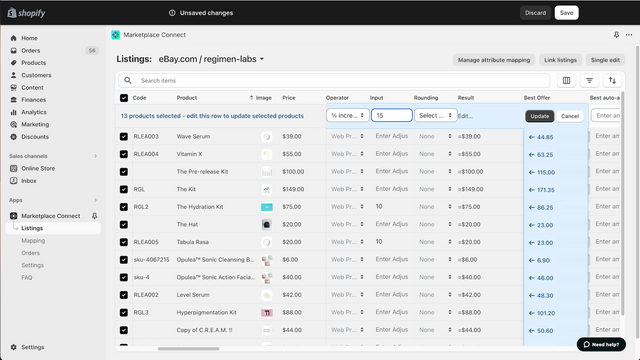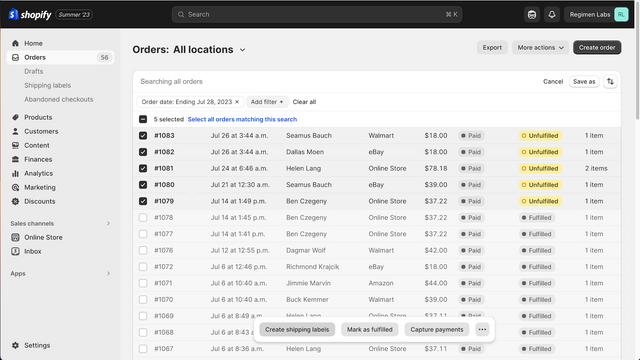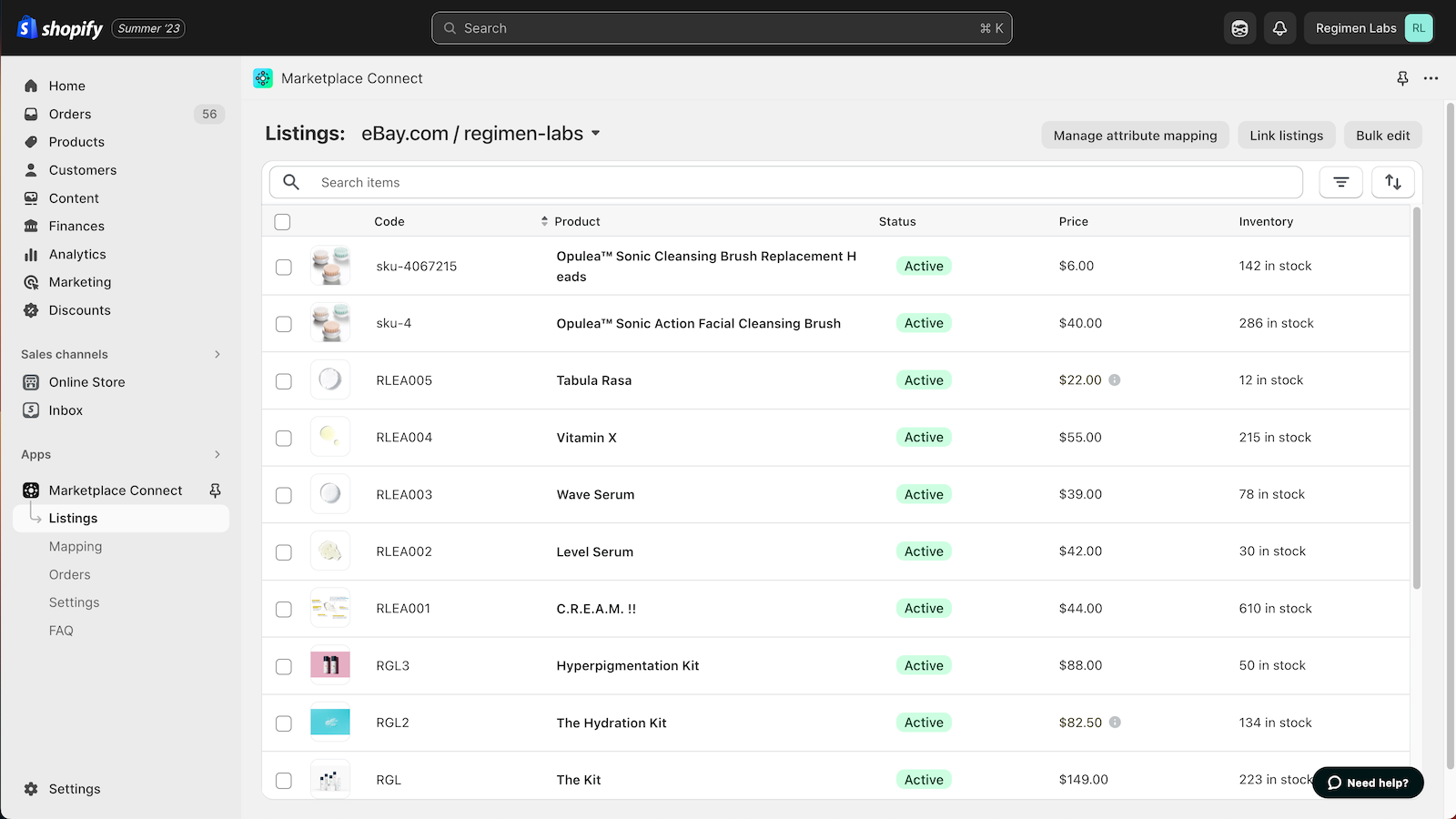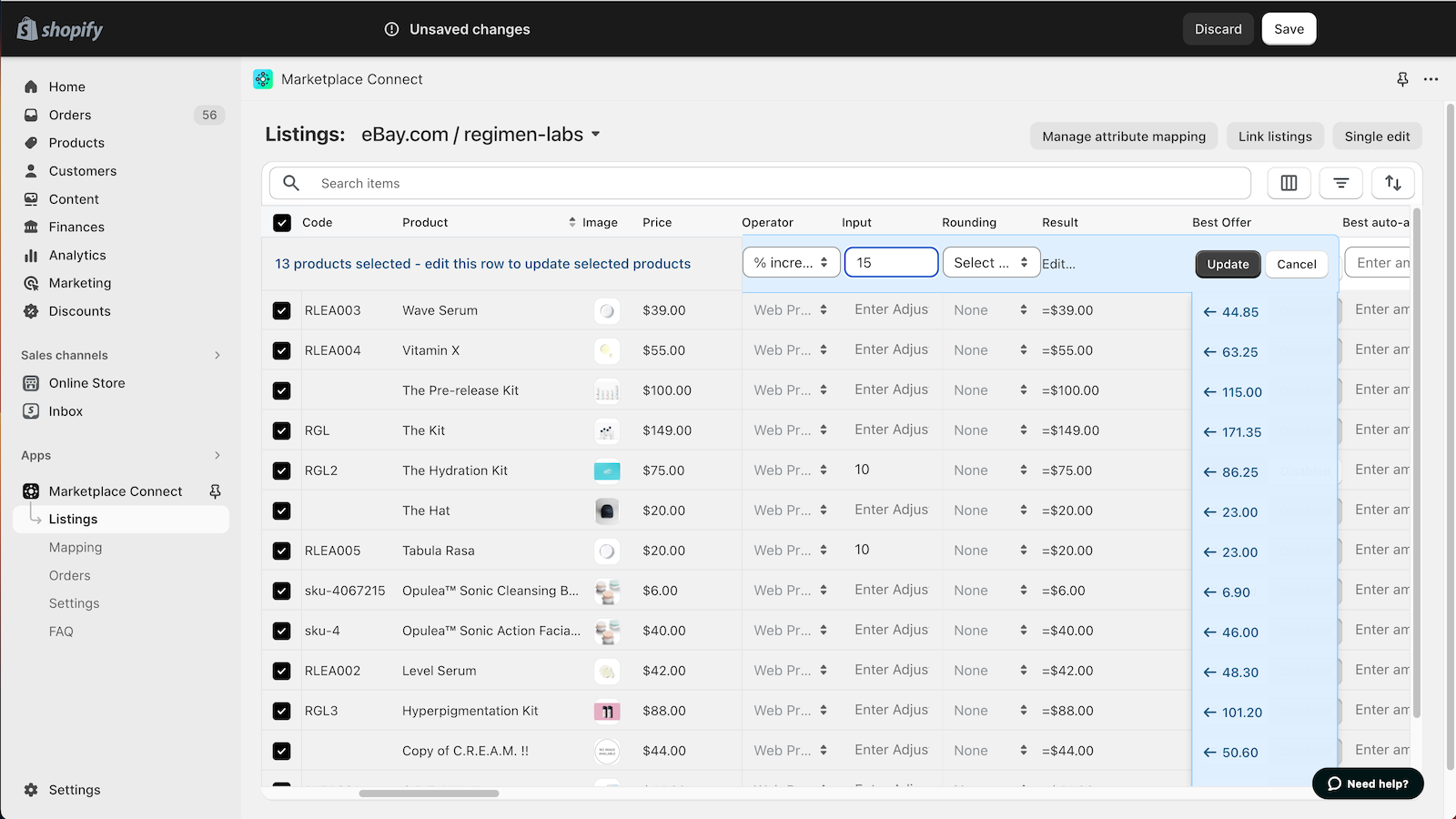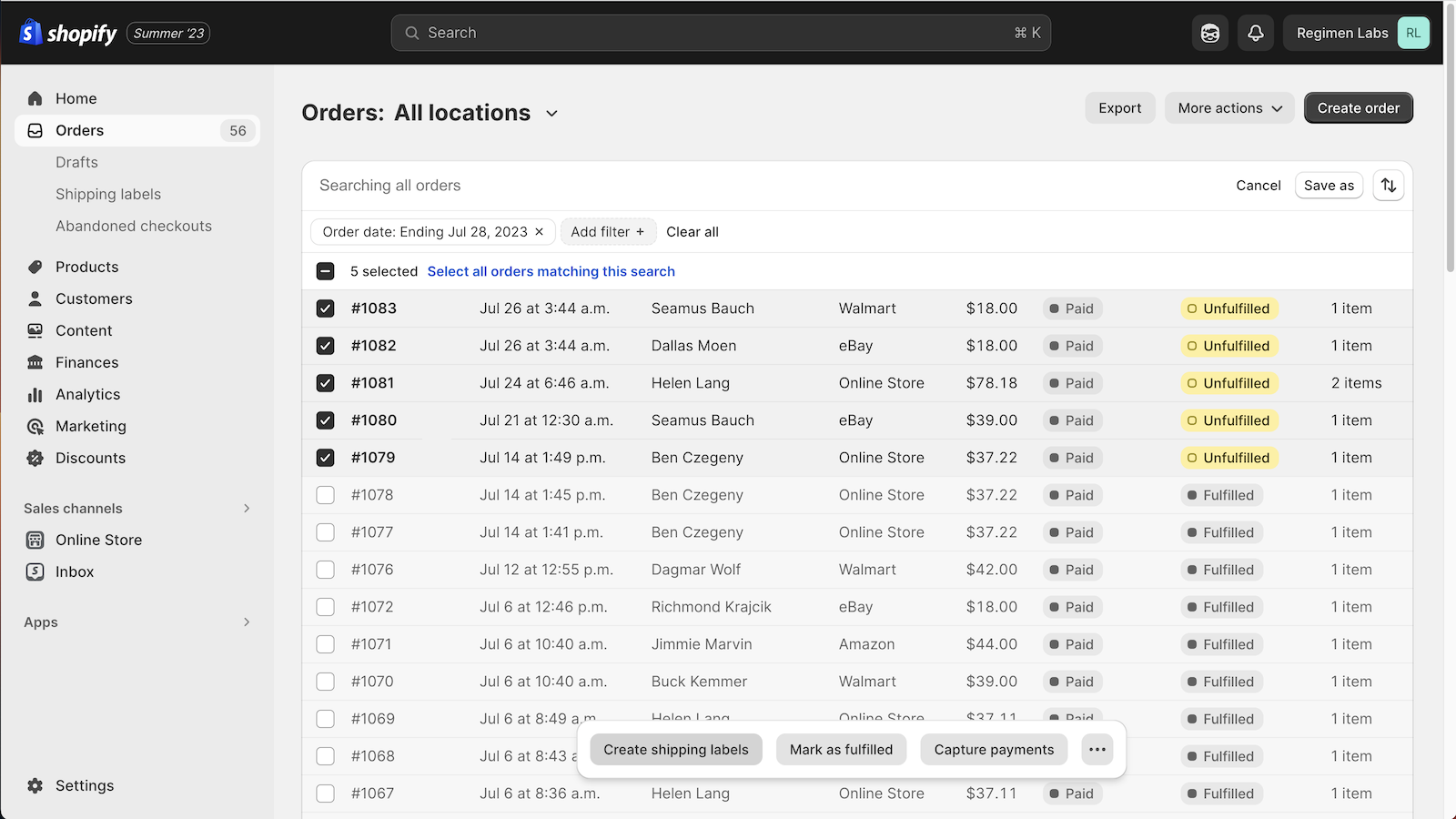Featured images gallery
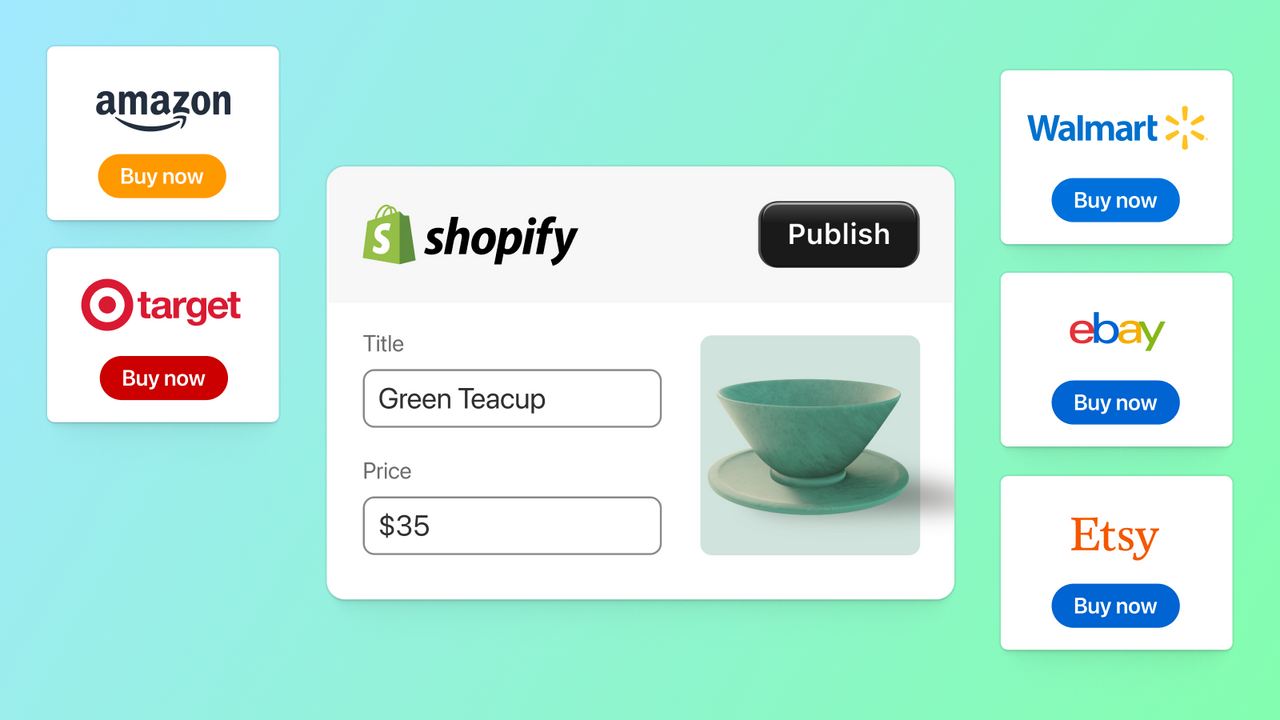
Sell across marketplaces like Amazon, Target Plus, eBay, Walmart, & Etsy. Manage it all in Shopify
Shopify Marketplace Connect (formerly Codisto) is the fastest and easiest way to sell across top global marketplaces like Amazon, Target Plus, Walmart, eBay, and Etsy. A single app to connect and integrate your Shopify product catalog with multiple marketplaces to effortlessly manage and synchronize listings, orders, inventory, and measure performance all from one place, Shopify.
- Sell products on marketplaces like Amazon, Target Plus, eBay, Walmart, and Etsy
- Manage listings, orders, & inventory in Shopify with real-time marketplace sync
- Flexible fulfillment options to support integrated channel strategies
- Unlimited marketplace account connections for supported marketplaces
- Sell in all marketplace regions and categories with built-in currency conversion
- Highlights
- Popular with businesses in United States
- Use directly in Shopify admin
Languages
English, German, Spanish, French, and Italian
Works with
- Amazon
- Target Plus
- Walmart
- eBay
- Etsy
Categories
Listing management
Data migration
Pricing
Free
Free to install
First 50 marketplace-synced orders/mo free, 1% fee per additional synced-order, capped at $99/month
All charges are billed in USD. See all pricing options
Reviews (2,005)
What merchants think
This is generated by Shopify Magic. It's shown when an app has 100+ reviews and a 4.0 overall rating.
This is generated by Shopify Magic. It's shown when an app has 100+ reviews and a 4.0 overall rating.
Feedback submitted
Merchants highly recommend this app for its ability to streamline inventory and order management across multiple channels, particularly praising its robust eBay integration for easy syncing and listing management. Features like bulk edits and custom field mapping, along with HTML support for eBay descriptions, enhance store manageability. Customer support is noted for being responsive and effective, especially during initial setup, making it essential for expanding online business presence.
I only use eBay and Etsy right now but eBay cross-listing has been the best thing ever. I REALLY hope that Codisto and Shopify are able to add more retailers like Poshmark, Mercari, Grailed etc... for us 2nd hand resellers. Overall the eBay app is FANTASTIC! With it being fully integrated, the titles, inventory, pricing, and it being listed on eBay update so fast. I think this is the biggest gamechanger to Shopify compared to other platforms.
Etsy on the otherhand is a great experience but can sometimes send the wrong info (like the wrong picture in the shopify order). OR sometimes never updated the inventory properly.
I will be utilizing Walmart, Target, and Amazon soon once I start selling my own branded stuff. No matter what business you are, you should be cross listing! Literally, if you don't think it belongs on Etsy cause its "not handmade", who cares! List it!
I had an issue with Shopify Marketplace Connect and reached out to live chat for help. Mark assisted me, and he was fantastic! He quickly identified the problem and guided me through the solution step by step. His expertise and friendly attitude made the whole experience stress-free. Thanks to Mark, my issue was resolved in no time. Excellent support!
Great experience! We are using the Support chat very often and always is someone available. Also via email are great people who are happy to help!
Support
App support provided by Shopify.
Get supportFeatured in
More apps like this








